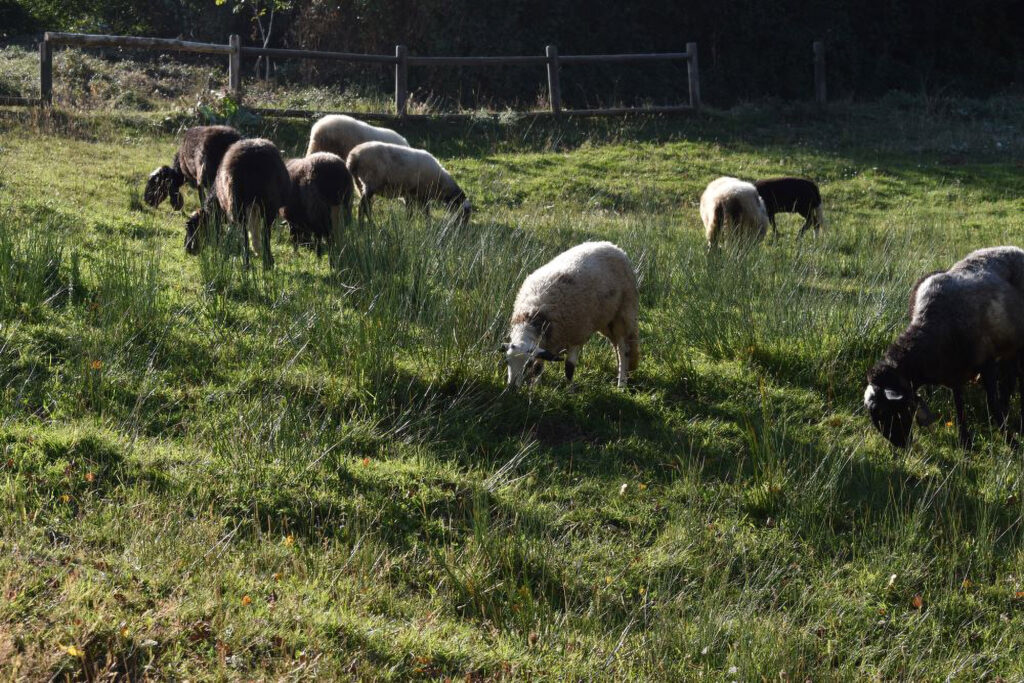Neolithic First Farmers Selectively Bred Sheep To Get Milk And Meat All Year Round
Neolithic farmers modified the breeding cycle of sheep in order to make them fertile all year round, providing milk and fresh meat regardless of the season.
These are the conclusions of research led by the Autonomous University of Barcelona that was recently published in the magazine Journal Archaeological Science.
The report was based on a study of animal remains found in the paleontological site of the cave of Chaves, in the northern Spanish province of Huesca, in the Aragon region.

The research data represents the earliest evidence in the modification of the seasonal rhythms in sheep breeding with the goal of adapting them to human needs.
Florent Rivals, a researcher who took part in the study from the Catalan Institution for Research and Advanced Studies (ICREA) in the Catalan Institute of Human Paleoecology and Social Evolution (IPHES), said to Real Press in an interview that “we have identified evidence of changes in the season of the sheep breeding, showing that farming population were already controlling the breeding patterns of sheep”.
According to the research the Neolithic farmers were making their livestock give birth in the autumn and winter months.
In the rest of Europe sheep were only giving birth in the Spring due to the optimal conditions it provides for the survival of new-born sheep.
Doctor Maria Sana, professor of the department of Prehistoric of the Autonomous University of Barcelona and coordinator of the project said in a press statement obtained by Real Press that “the alteration of the seasonal rhythms in the cattle breeding was a huge milestone for prehistoric societies,”

She added: “Being able to get meat and milk for the whole year, had important implications in the health, economy and the social organization of the first farming communities and were the base of the farming strategies that have lasted until today.”
The research has also confirmed that the farming strategies were being used even at the beginning of the Neolithic period.
The modification of the natural cycle of the births of the wild sheep affected also the physiology of the animals, extending their period of fertility.
Doctor Marie Balasse, the researcher of the Natural History Museum of Paris, said in a press statement that “the Autumn birth during old Neolithic in the cave of Chaves confirmed that this practice is old in the Mediterranean area, involving the combination of the biological capacity of the sheep, the zootechnical knowledge of the farmers and the favourable environmental conditions”.
Rivals commented that it is unclear how the Neolithic farmers managed to control the breeding of the sheep.
However, he said that: “it might have been due to hormone levels, separating the lambs from their mothers and approaching the males. If a sheep mother is separated from its lamb, the sheep generates hormone changes modifying the cycle.”

Rivals added that the Neolithic farmers got the sheep to give birth all year round the birth so that they would have enough young lambs to eat and enough milk to drink.
According to the researchers, the modern-day domestic sheep comes from its wild relative the Ovis Orientalis.
The modern domestic sheep has changed a lot genetically compared to its distant relative that was first domesticated in Turkey and came to the Iberian peninsula approximately 7,500 years ago.
The research also shows that, apart from that control and the human pressure of these sheep and their breeding process, also affected the feeding and the mobility of this species.
Researchers also investigated how the animals were fed and moved around by the Neolithic farmer.
The researchers analysed for the first time the teeth erosion of the sheep’s teeth by analysing the stable isotopes C13 and C18.
Their findings showed that the sheep diet was extremely limited mostly to “fodder” and some unknown ingredient.
It is believed that the farmers collected the leaves from the nearby woods which was used as food.

The sheep were often fed outside the cave’s that the farmers inhabited although during bad weather the caves would be used to shelter the animals.
Rivals said that: “the results over the diet of the sheep living in the cave of Chaves are surprising”
Rivals added: “different dietary habits were found between the young animals and the adult ones, which could be linked to an important control over the farming production during the beginning of Neolithic”.
Doctor Alejandro Sierra, the researcher’s paper main author, summarised the findings stating that: “the results obtained about the breeding and the diet of the sheep living in Chaves cave are key for the knowledge of the economic systems of the first farmer’s societies of the Iberian Peninsula.”



